2013 MV Agusta F3 800 Review
MV Agusta has enjoyed enormous success after launching its first new triple, the F3 675. Not it ups the ante with the new F3 800. Welcome the super Triple with 148 horsepower and the chassis of a 600.
I’m at Misano World Circuit Marco Simoncelli, renamed after the MotoGP hero who was fatally injured at the Sepang circuit in 2012 (The Misano circuit was named after Simoncelli because he is from the area). A mean-looking matte-black F3 800 is handed to me for my first session and off I go. After a couple of laps warming up I’m satisfied that grip levels are as good as they’re ever going to get at Misano and it’s full throttle on TC level two and Sport mode. It’s incredibly easy to get up to speed as the F3 800 chassis is so light and nimble allowing a rider great leeway.
On the back straight the EAS (electronically Assisted Shift) gives me trouble kicking up from third to fourth gear each lap and I have to resort to pulling in the clutch the old fashioned way to shift from third to fourth. I chose a different F3 800 for my next session and on this specimen there’s no problems at all, suggesting this is an adjustment issue more than anything else.
VIEW: Read our review of the 2013 MV Agusta F3 675
Getting properly up to speed I exit turn six maxing third gear and shifting up to fourth while a headshake develops into a good old fashioned tank slapper. «Really» I thought and reduced speed and short shifted to fourth on my next lap. There is no steering damper on the F3 800 and if you want one it’s at an extra cost.
The new 798cc Triple makes all the right noises and on full song it’s nothing short of full racing where the soundtrack is concerned. The new version of the 800 produces a claimed 148 horsepower at 13,000 rpm and 88 Nm at 10,600 rpm. To achieve this impressive figure MV Agusta have added a new piston with longer stroke, new counter-rotating crankshaft and new fuel injection with 15% more flow. Compression is also up to 13.3:1 from 13.0:1.
MV showed us a graph comparing the 675 to the 800, giving evidence of a 30-horsepower boost in the 6000 to 12,000-rpm range. Out on the circuit this midrange boost is felt particularly in the corner exits where the F3 800 accelerates more like a literbike than a tuned 675. It’s that great old concept of taking the best of both worlds to create a proper riders machine. MV Agusta has taken out pretty much the same effect per cylinder in the F3 800 as in the 200hp F4 RR but in a lighter more responsive chassis.
Through the corners is where the F3 800 shines, and it has a very forgiving chassis which comes alive with great feel with the 800 powerplant. The F4 RR’s mind-blowing top end is great, but in the F3 800 you have plenty enough also for an experienced rider with greater ease of use. In turn this could well mean more satisfying miles on an F3 800 than an F4 RR. As such, the F3 800 is a great product which should appeal both to current F3 675 and F4 owners.
Helping the chassis further are electronic traction control and riding modes. The eight-stage-plus-off traction control also features a custom mode which can be tuned in specifically for you and for a particular circuit. You can also switch between different levels while riding, but with gloves on I find MV Agustas buttons under a soft rubber cover too awkward to use while riding.
I used level 1 on the TC most of the time and Level 2 with a new rear tyre and a few laps with TC off. Level 1 worked best, and off was fun, but level 2 might just be best when the tyres are starting to go. I found the Sport map to be a tad too aggressive as I preferred first gear in two corners where you can also use second. I preferred the Normal mode because then I could chose to be aggressive when I wanted it and you don’t really lose anything because the corner speed can be kept high without using the absolute top end of the engine.
COMPARISON: Read our review of the 2011 Suzuki GSX-R750
The MV Agusta F3 800 is priced competitively. The version I tested with EAS is priced at £13,990 in Italy, which is only £1,800 more than the 675. It’s definitely worth the premium because the F3 800 can play with the big boys.
Conclusion
It is very easy for me to recommend the F3 800 because of the appeal of big power in a small bike. Trouble with the transmission and the lack of a steering damper drags it down a bit but not enough for me not to put it up there with my top three or four most desirable sportbikes regardless of capacity. Yet another good reason to go Triple.
+ Highs
- 798cc Triple with plenty of power and oomph
- Nimble and lightweight chassis
- The F3 800 isn’t exactly ugly to look at, is it?
– Sighs
- Transmission niggles
- Lack of a steering-damper
- Dealer support is limited
MV Agusta F3 800 Tech Talk
MV’s three- and four-cylinder platform manager, Brian Gillen, speaks about the new F3 800
Genesis“It is really important to say that this project began more than five years ago. It began with the development of the 675 and 800 together from the beginning. Before we even designed the first part we already had a plan to make two different engine displacements out of the three-cylinder platform. We came out with the 675 first out of marketing reasons, and at the same time we were developing and testing the F3 800.”
Electronics“We have an engine-management system which is completely common between the two bikes, so the ECU and throttle bodies (50mm) are the same between the two bikes. But the F3 800 has a top feed fuel injector assembly which is dedicated to the 800 engine with different fuel injectors. We have fuel injectors on the F3 800 with 15% more flow to aid us in making more peak power and additional torque.
COMPARISON: Read our review of the 2011 Ducati 848 EVO
“When we started the ride-by-wire project 5 to 6 years ago we were smart enough to know that we didn’t know everything. It meant that we really had to think of future flexibility and what we wanted to do with RBW and software. We developed the system so that we could continually develop the strategy and maps and how the ECU thinks and make those maps and strategies available to customers immediately as we developed them. They could go directly to their MV Agusta dealer and install those maps free of charge. The updates with the maps is not only something that makes the bikes work better, it’s also added value to the bikes. For example we are working on the updated downshift on the F4 model range and soon enough we will make this available to customers free of charge. The bikes are always being renewed this way and we will keep making it available. On the MV Agusta website you can check your model and find out when the last updated map were released.”
Engine“Differences between the 675 and 800 engine. There’s a new piston and piston crown shape 13.3:1 compression ratio vs. 13.0:1 on the 675, a new connecting rod which is shorter than the 675. Because the stroke increase has kept the same bore diameter at 79mm but with increased stroke staying within the same confines of the engine casings. The size is the same with a brand new crankshaft with the new stroke and a completely new mechanical slipper clutch which is above and beyond the engine braking that you can adjust electronically.”
Chassis and Suspension“We have the front suspension with dedicated hydraulic valving and oil level, the spring rate is the same even though the preload is different. The rear shock has dedicated hydraulic valving with the same spring rate. Because of the additional torque and power we had to have a little stiffer hydraulics in order to get the power on to the ground.
More by Tor Sagen



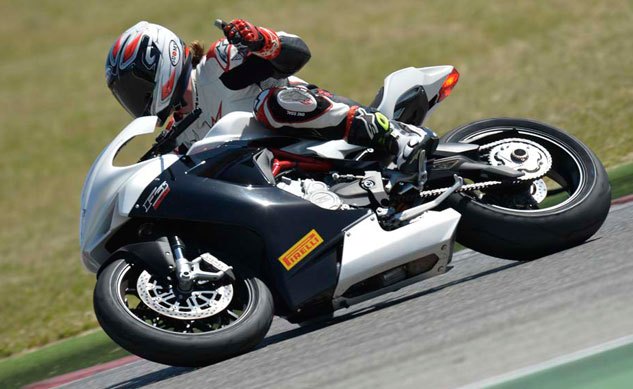
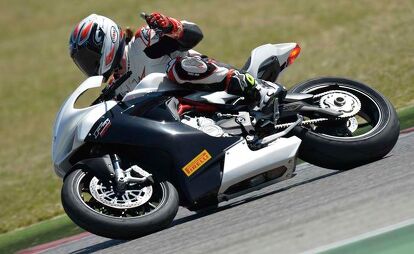
























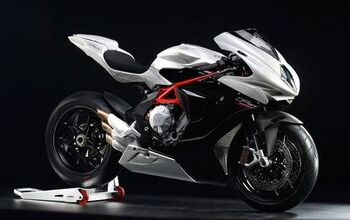



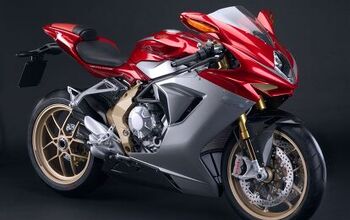


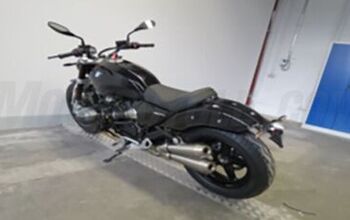
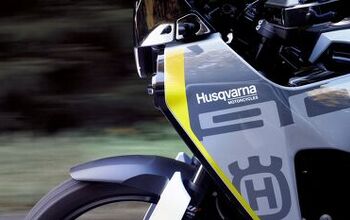






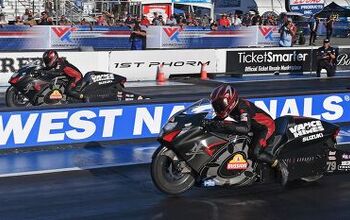

Comments
Join the conversation
Sold my 1078rr two years ago..loved the look, but major over heating issues made me sell it..it looked good, but the design was way behind the times..the weight stated was nothing more than a blatent lie.... I still think the chasis was made of pig iron...anyway..I now have the Aprilia RSV4 factory..... I love it...fast, light...and reliable.... but far more power than any normal person needs..... so...the F3 800 is starting to look appealing
...I agree, a blade is cheaper, and reliable, with the best back up you could ever wish for..... but strangers looking at style will always win you over.... arh....
I like the head lamp . its beautiful ..